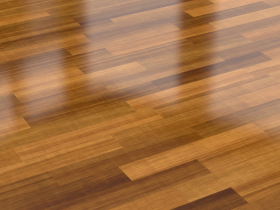There are several ways to boost the value of your home. For example, you can incorporate smart technology into your appliances and other electronics.
Renovating is another option. Take the floor, for instance, you can easily replace it with something else. If anything, it’ll give your house a brand new look.
Some of the most popular options include hardwood, linoleum, natural stone, and vinyl. Laminate flooring is a decent choice as well.
Want to know how it differs from vinyl? If so, you’re on the right page. We’ll be going over everything that you need to know about the materials below. Keep reading to learn more!
What Is Laminate Flooring?
Laminate floors were developed as a durable alternative to hardwood. A hybrid product, it consists of a particleboard wood base that’s topped by a clear protective layer.
Sometimes called laminate wood floors, they’re often used for kitchens, living areas, bedrooms, hallways, and dining areas.
What Is Vinyl Flooring?
Vinyl floors are different from laminate floors in that they’re made completely of synthetic materials. That is, they’re made from plastic.
Appearance-wise, however, they can be very similar to laminate and even hardwood.
Pros of Laminate Floors
Laminate floors are extremely durable with their resin coating, much more so than carpet or hardwood. In addition to that, they’re easy to clean—all you have to do is sweep and vacuum on a weekly basis.
Plus, they’re economical. That is, they’re generally less expensive than other options. On top of all that, there are many styles to choose from.
Cons of Laminate Floors
Laminate floors tend to be prone to moisture damage (i.e. the wood can easily swell if exposed to water). Not only that, but they’re generally noisier underfoot.
You also can’t sand or refinish it if it becomes deeply scratched or grooved; it will need to be replaced.
Pros of Vinyl Floors
Vinyl floors are known for being comfortable to walk on. Not only are they shock-absorbent, but they also tend to feel warmer to bare feet on cold days.
In addition to that, they’re durable. For one thing, they can handle moisture much better than laminate; that’s why they’re often used for areas such as kitchens and bathrooms.
Finally, they’re easy to install. As long as the subfloor is level and intact, you can install it without any modifications.
Cons of Vinyl Floors
Vinyl floors are typically hard to remove—this is especially true if adhesives were used during installation. In addition to that, they don’t stand up well to heavy loads.
Compared to hardwood floors, they also have shorter lifespans. On top of that, they’re not eco-friendly.
Choosing a Flooring
Hopefully, that gives you a better idea as to how laminate flooring differs from vinyl flooring. As you can see, they both have their pros and cons.
Interested in reading more posts like this? Then check out the rest of our flooring section!












